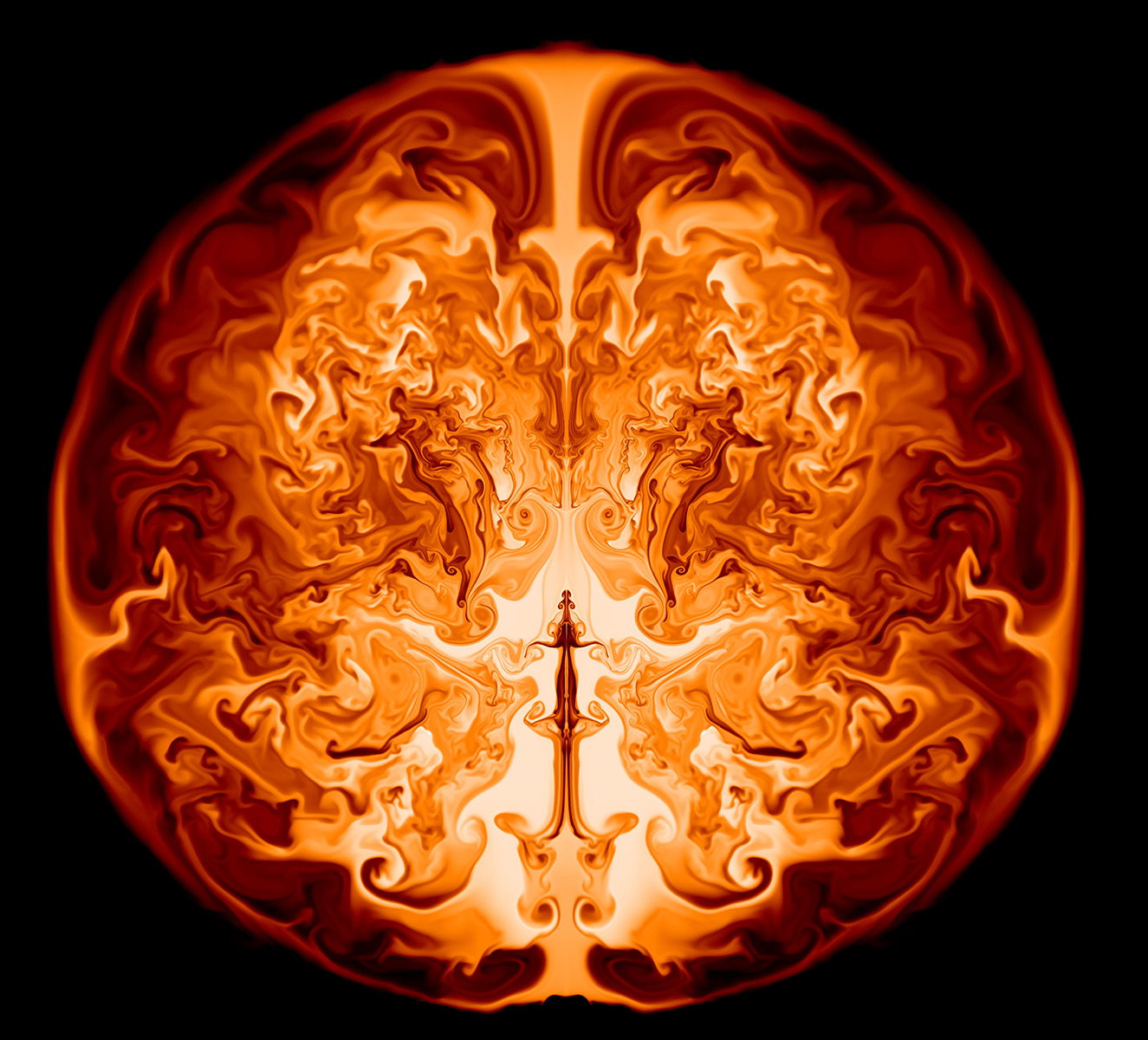A non-rotating primordial star can die as a highly energetic thermonuclear supernova powered by explosive helium burning, releasing 10,000 times the energy of a typical Type Ia supernova. The explosion is triggered by the general relativistic contribution of thermal photons to gravity in the core of the star, which causes the core to contract and explosively burn. The energy release completely unbinds the star, leaving no compact remnant, and about half of the mass of the star is ejected into the early cosmos in the form of heavy elements. This image shows a slice through the interior of a supermassive star (initially 55,500 solar masses), showing an inner helium core which is being converted to oxygen through nuclear burning. Energy release powers fluid instabilities, visible as swirling lines. The simulation is shown at a point in time roughly twenty four hours post-explosion, at which point the outer radius of material has reached approximately 1 AU.
Methods: 1D KEPLER code + 2D CASTRO code





